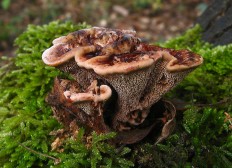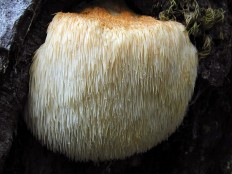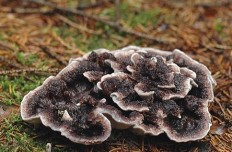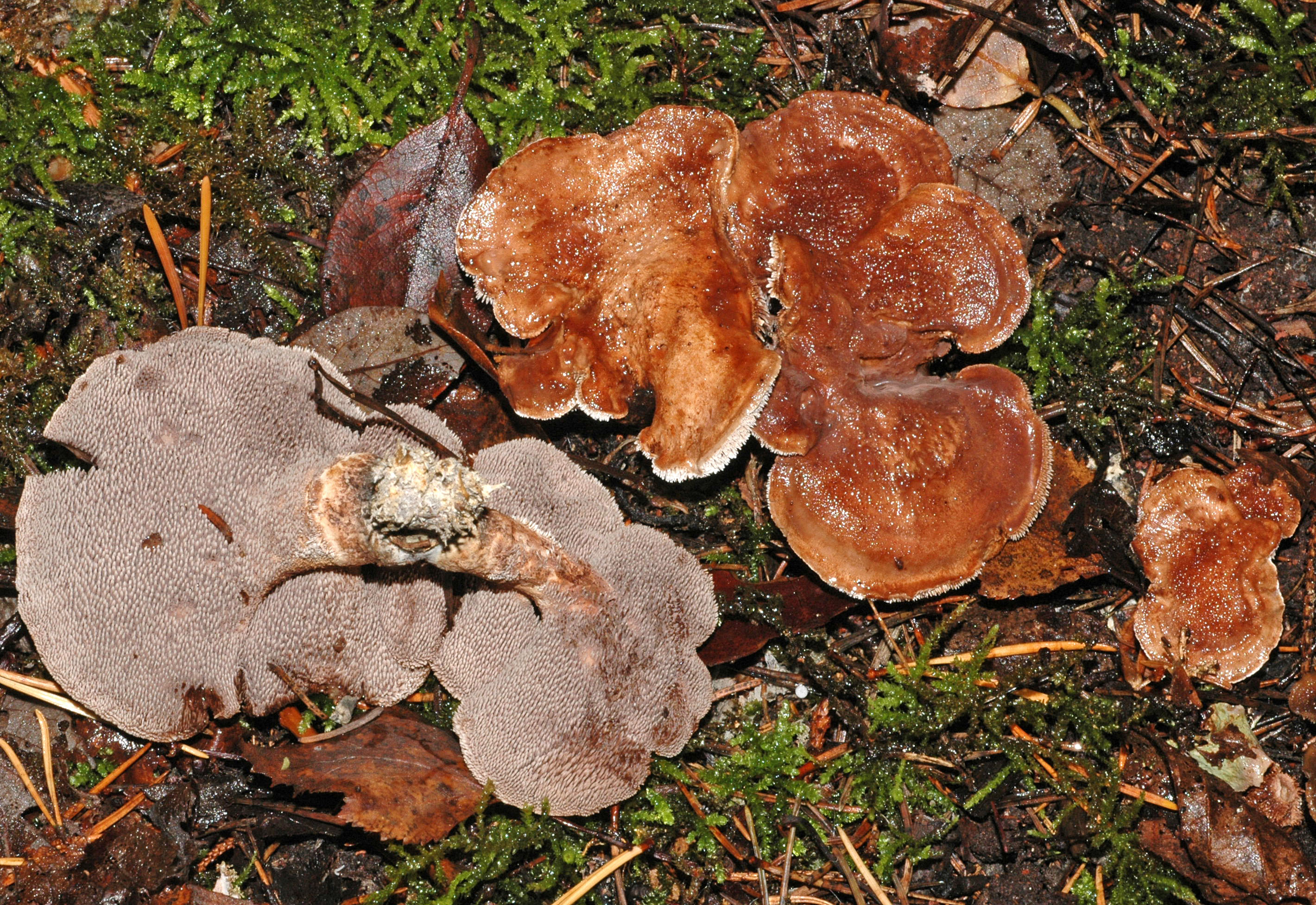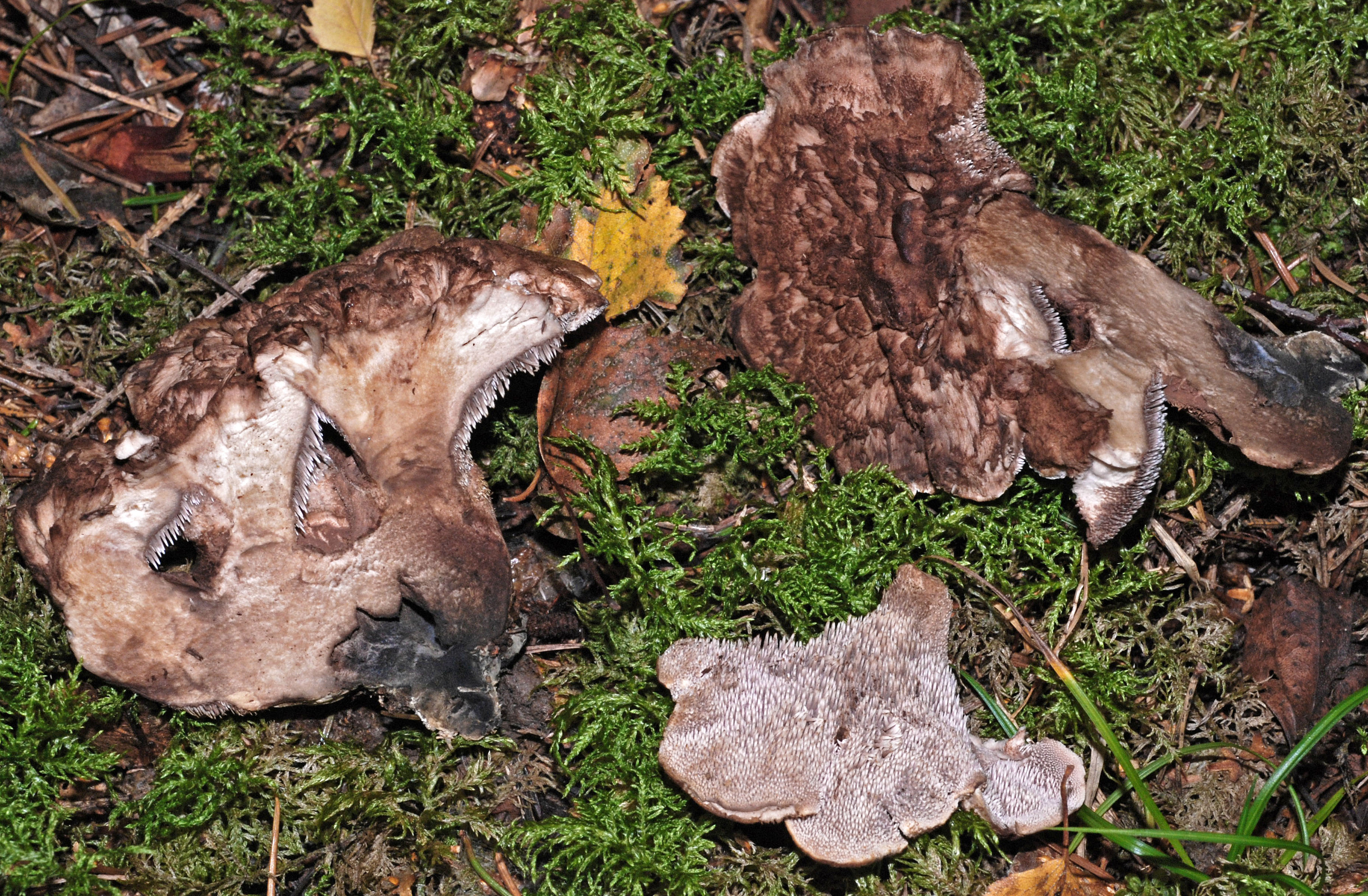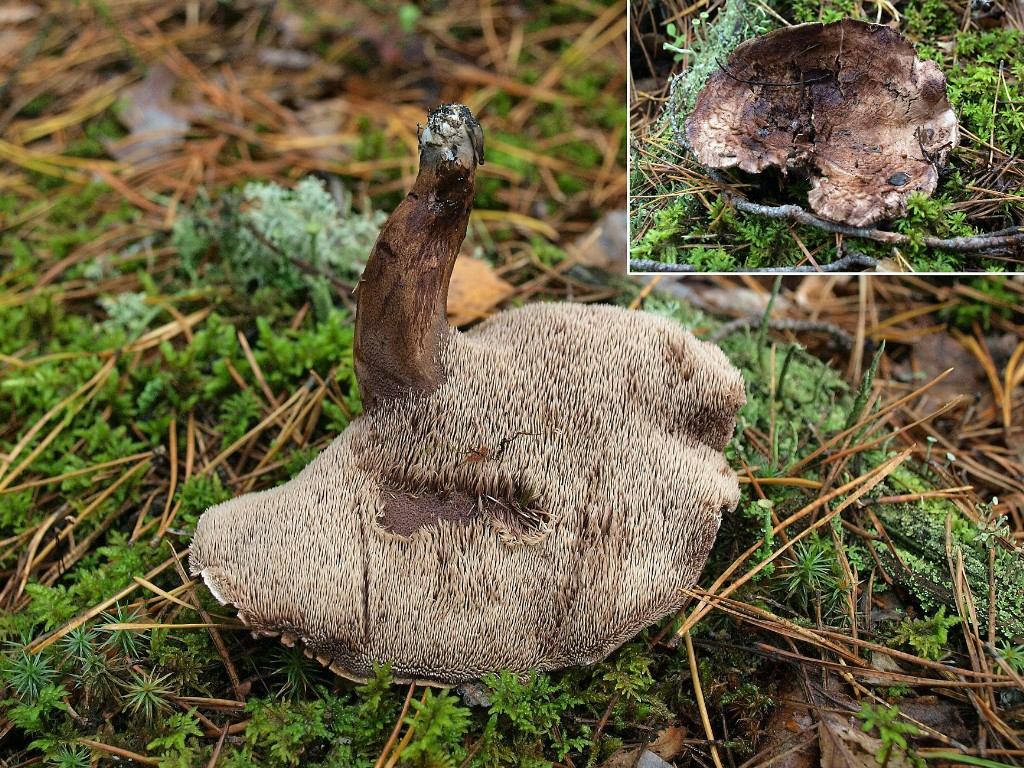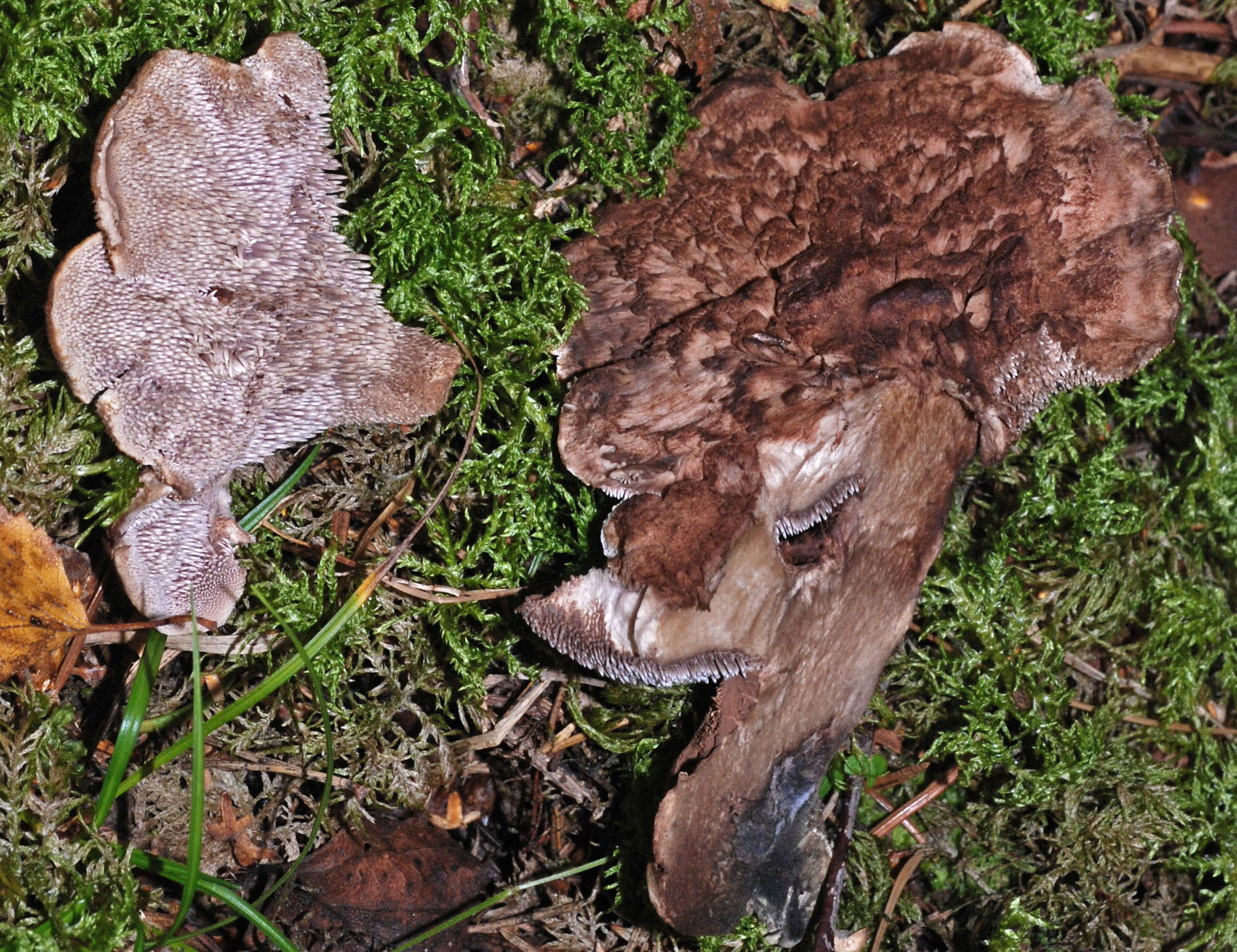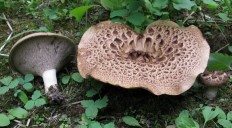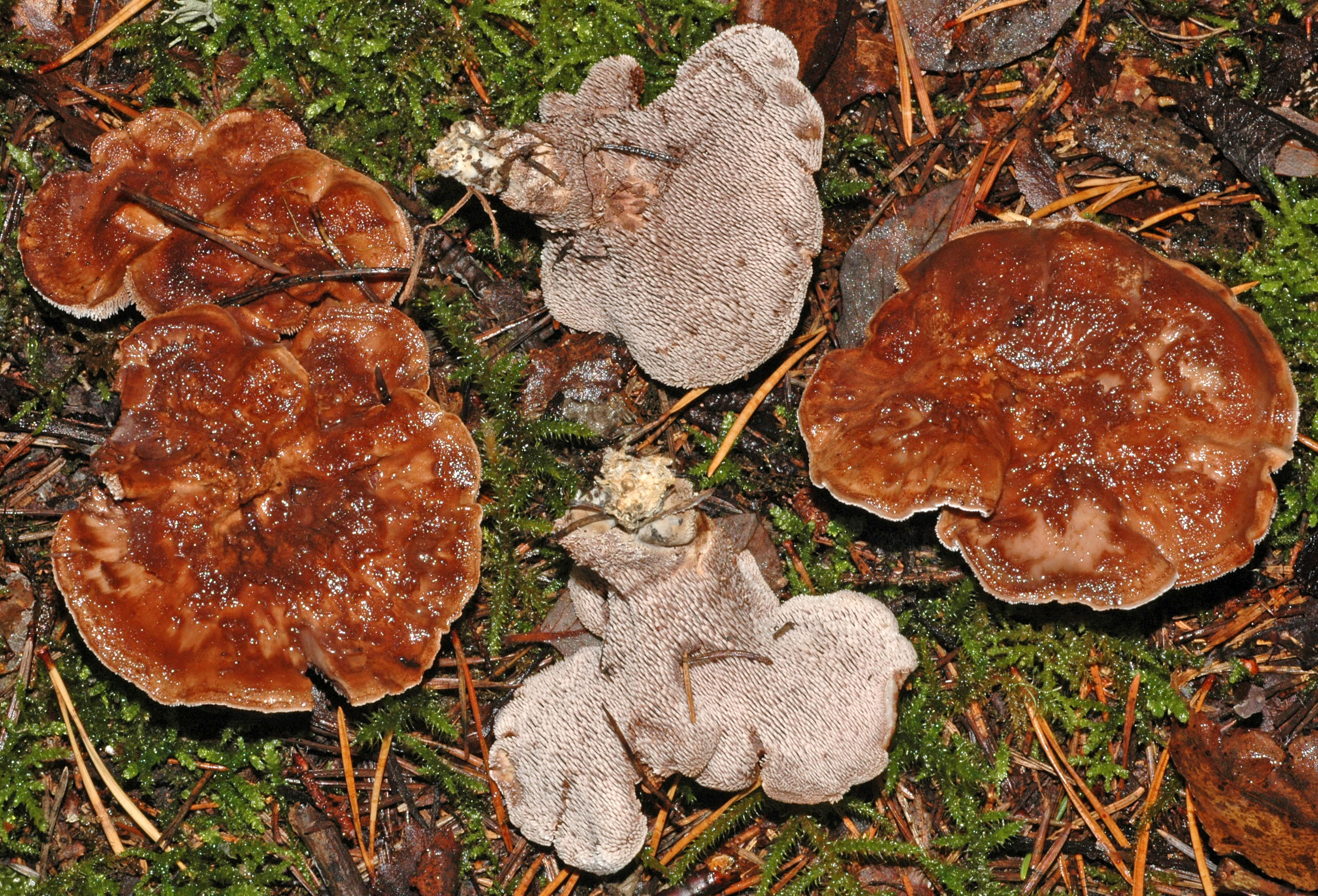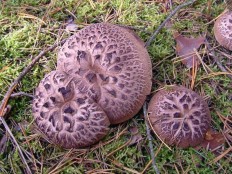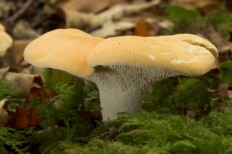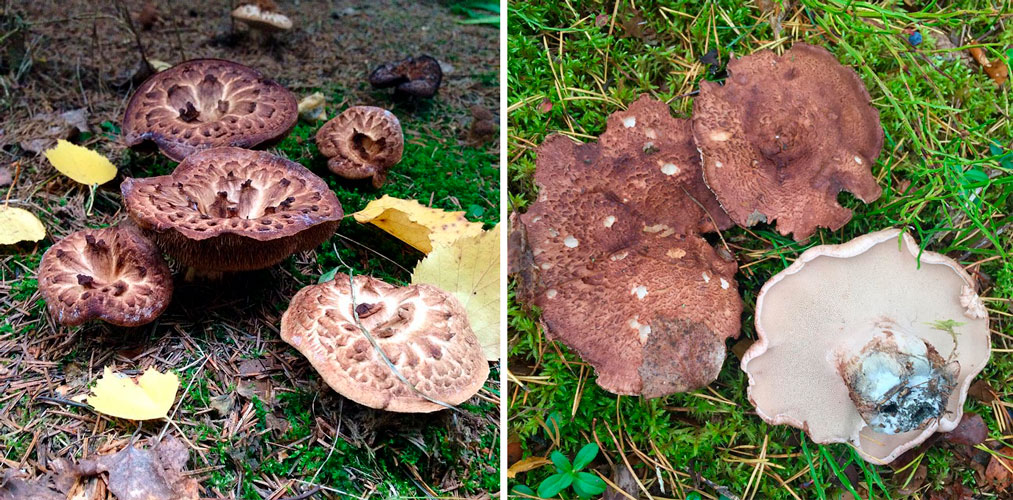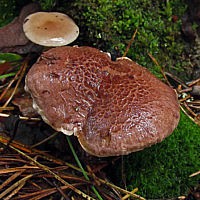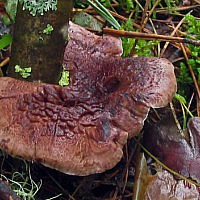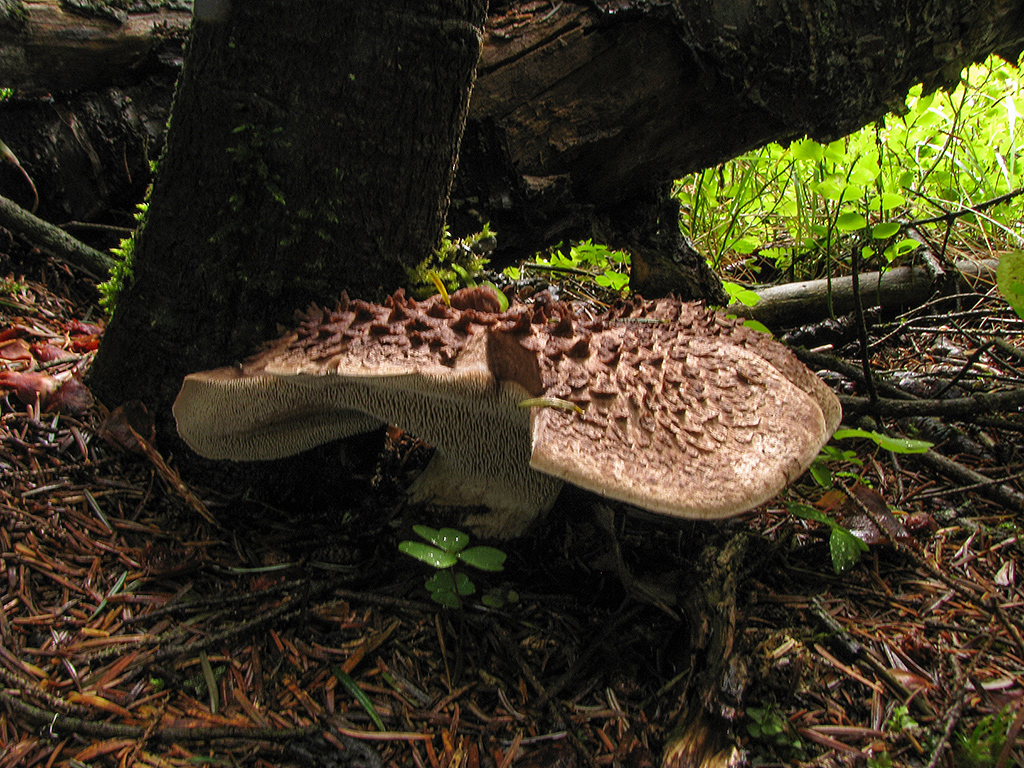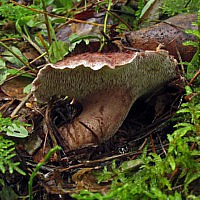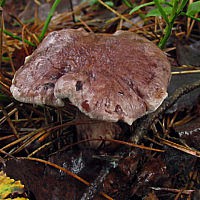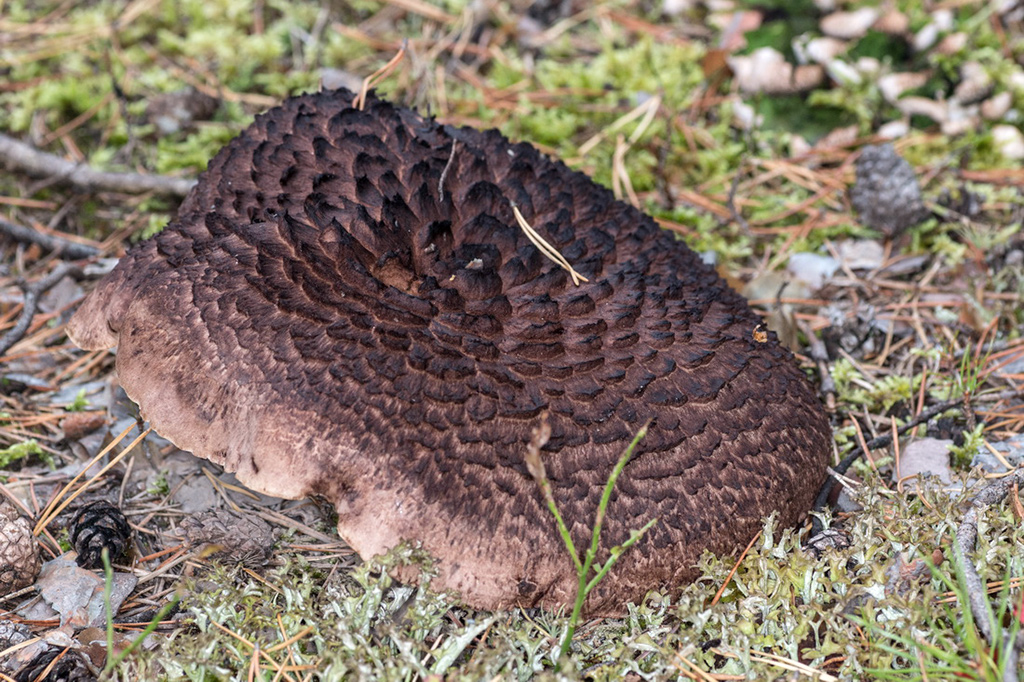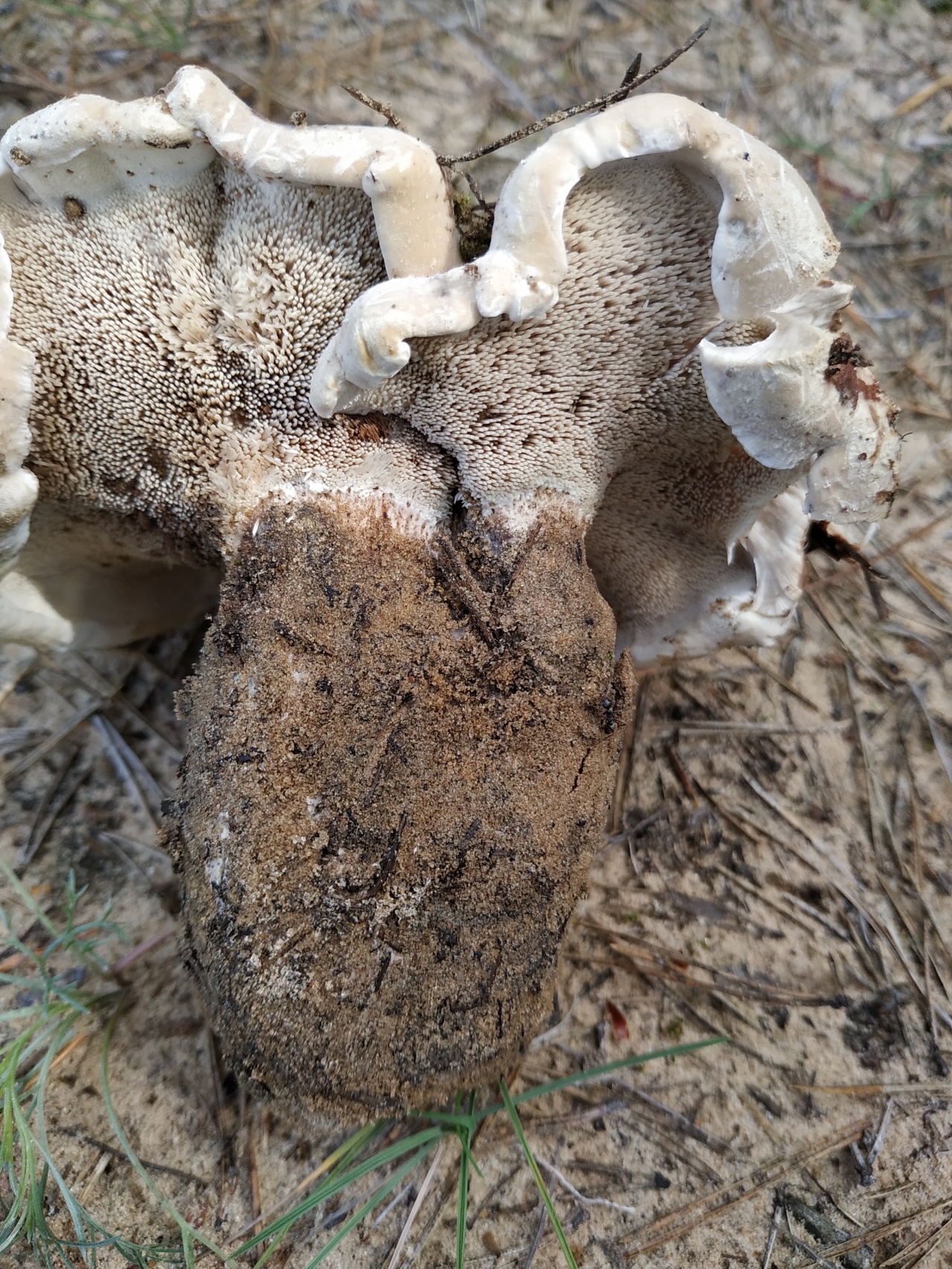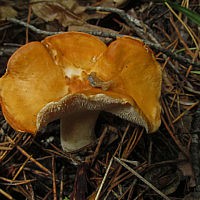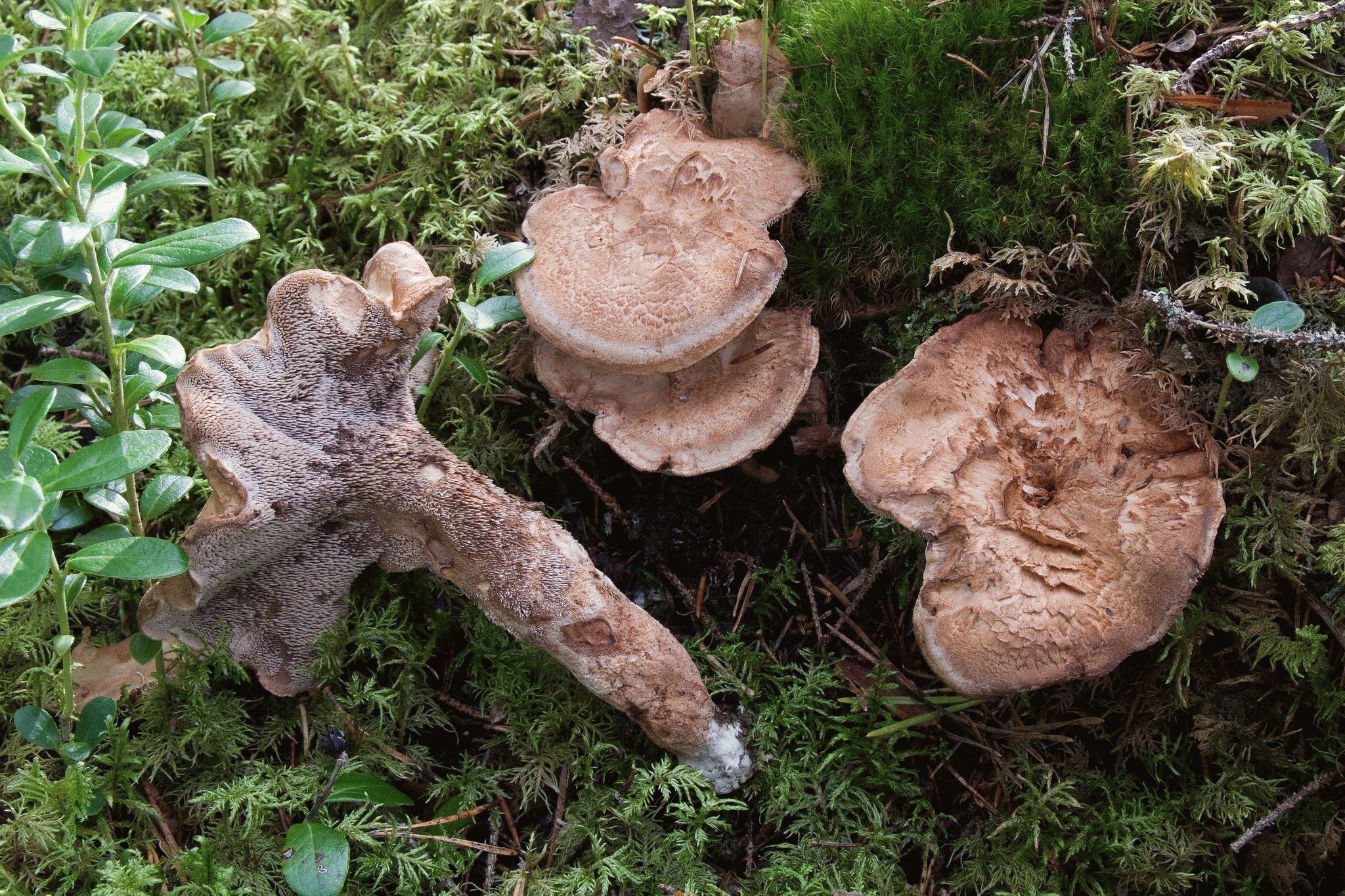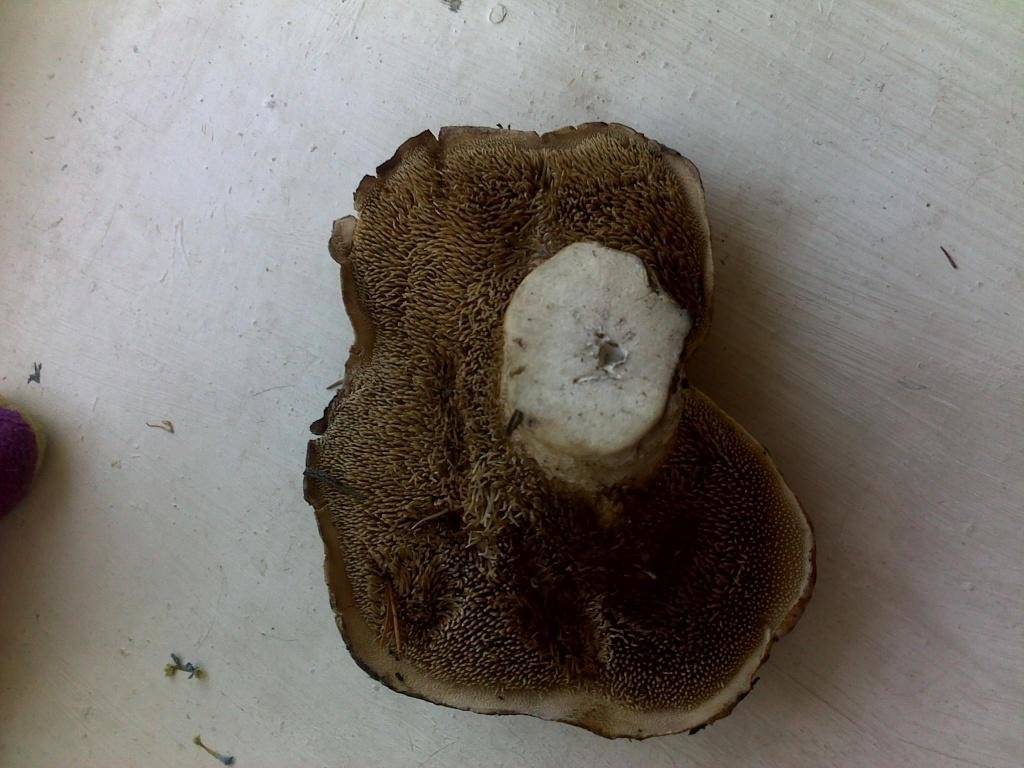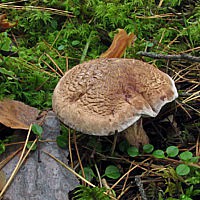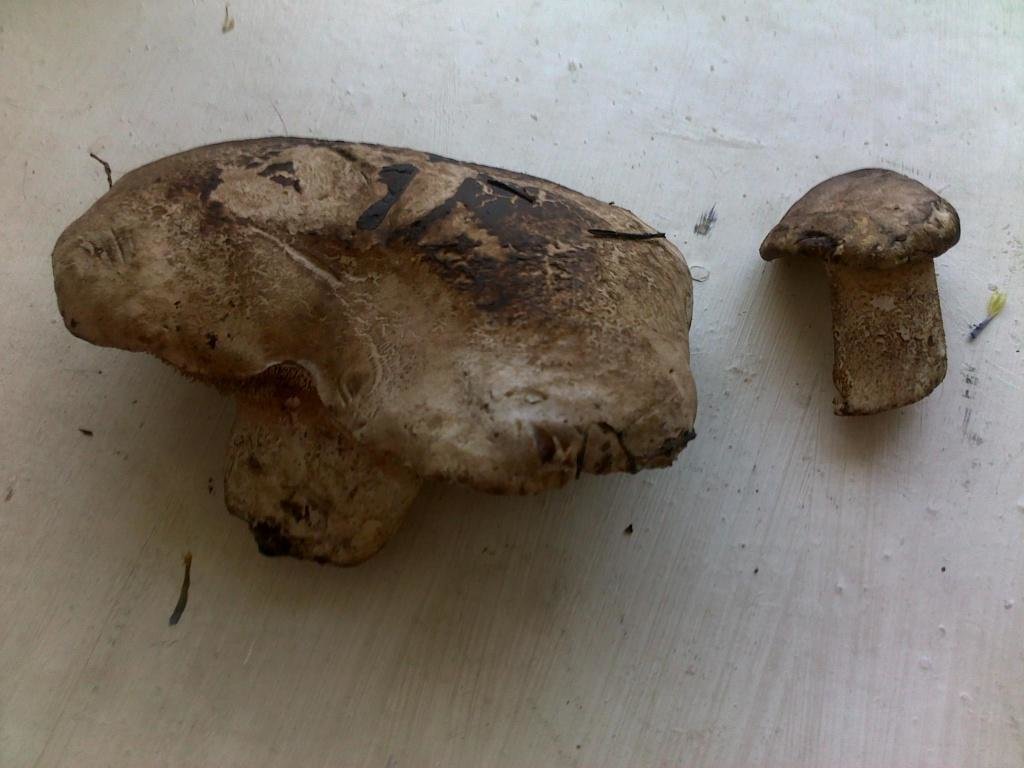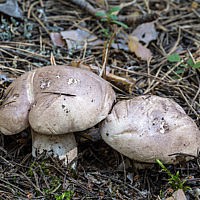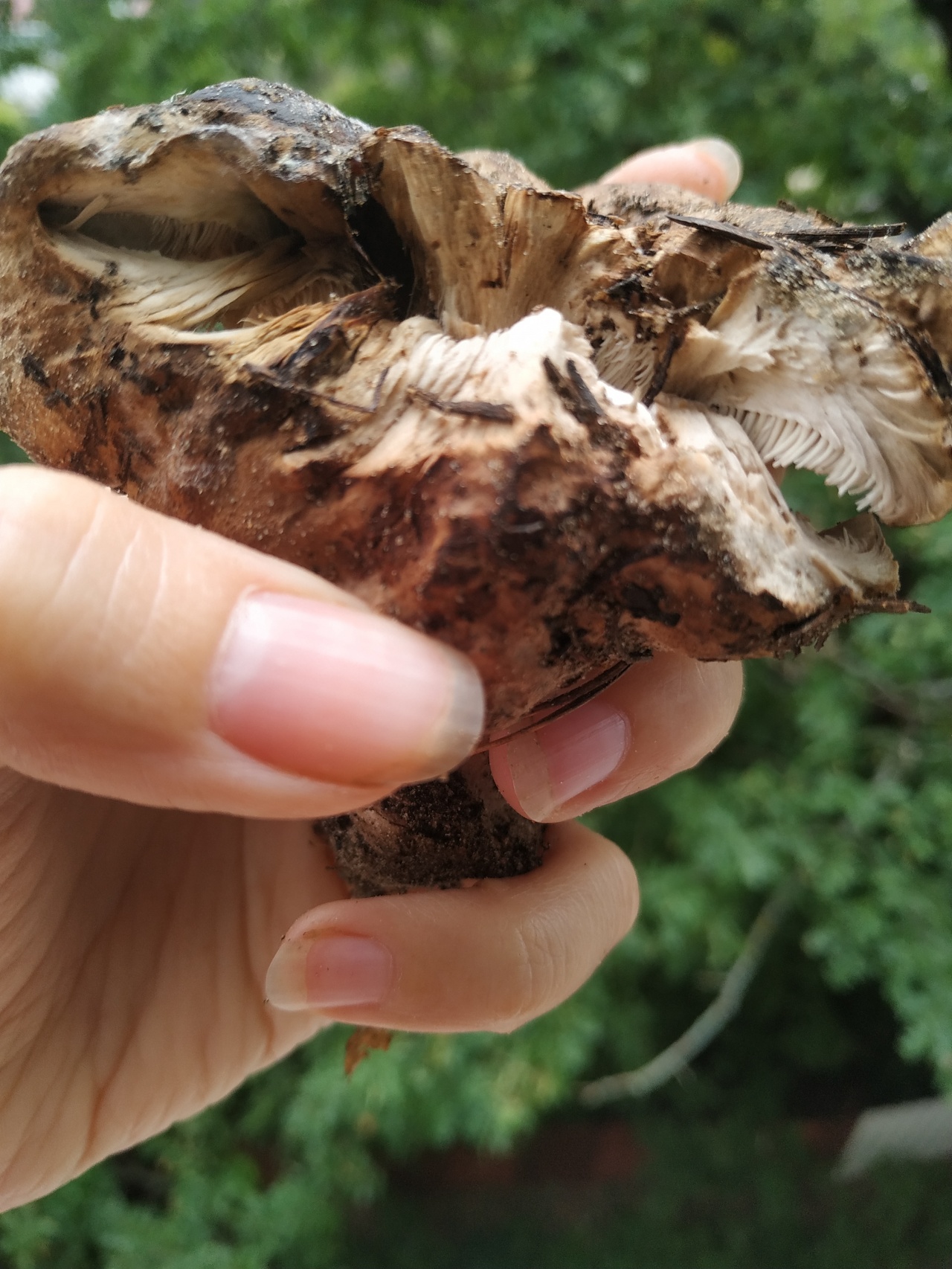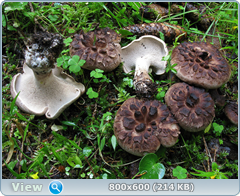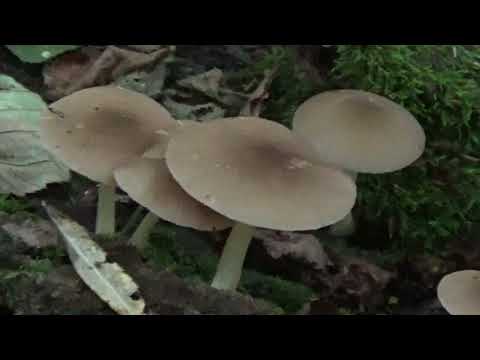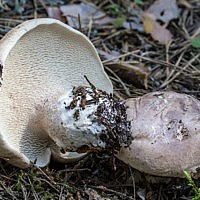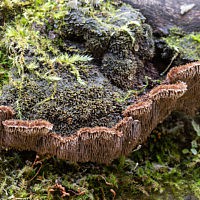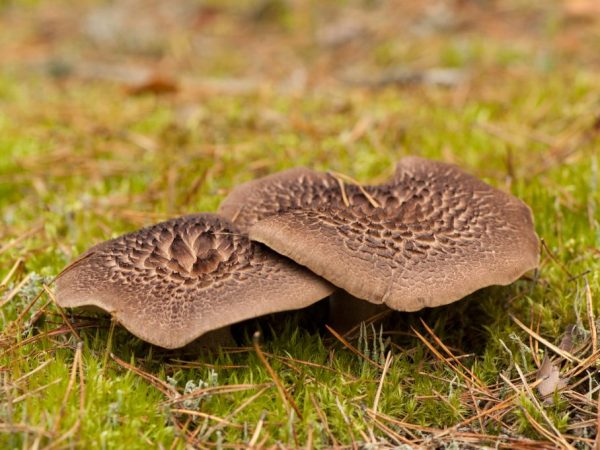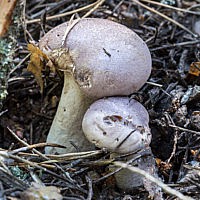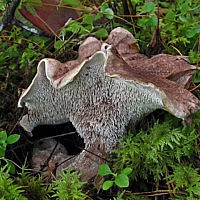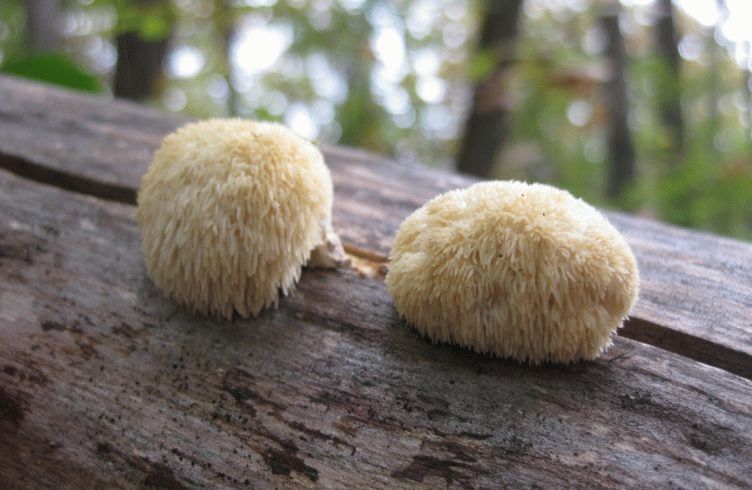Alpine Hericium
Hericium alpestre Pers. = N. coralloides (Fr.) S.F. Gray.
Family Hericiaceae - Hericiaceae
Category and status. Category 3 (R). Rare view. A relic of mountain dark coniferous forests. A promising object for biotechnology.
Short description. Fruit body 10-20 to 40 cm, from the very base with treelike or coral-branched branches, sometimes nodule-like at the base, hard-fleshy, hardening with age, snow-white, sometimes with a pinkish tinge, with age, from touching or drying brown yellowing. The spines cover the branches almost to the very base, usually from the lateral side or directed in all directions. The hyphae of the tissue of the fruit bodies are amyloid, somewhat gelatinous, therefore, in damp weather, the branches look slightly transparent. Spores are ellipsoidal, colorless, amyloid, 3.5-5 x 3.3-4 microns.
Ecology and biology. Xylotroph or weak pathogen. Edible, single basidiomas are extremely rare, from July to August. If the coral-shaped hedgehog lives in a wide variety, including synanthropic, places and prefers deciduous trees - in Europe it is beech, less often elm, oak, ash, and in the Baikal region it is birch, occasionally poplar, then the alpine hedgehog affects mainly fir in mountainous undisturbed forests.
Spreading. Holarctic species - Europe, Asia, North. America. In Russia, they are also common in all forest zones and are also rare. In the Irkutsk region, the coral-like hedgehog has been recorded almost everywhere, and reliable finds of the Alpine hedgehog are so far known only for the Bratsk (Mount Starukha, the village of Kob) and Bodaibinsky (Lake Oron) regions.
Limiting factors. Features of biology. First of all, obviously, weak competitiveness in the biocenosis. Near settlements, bright and unusual fruiting bodies, as a rule, are aimlessly destroyed, much less often used for food.
Adopted and necessary security measures. Unfortunately, the systematic position of two closely related taxa requires clarification. Moreover, the Russian name “coral-shaped hedgehog”, and even the Latin “N. coralloides ", which are used in the cited Red Data Books, in the understanding of different authors can refer to the rarest alpine hedgehog (H. alpestre Pers.), and to the coral hedgehog itself (H. clathroides (Fr.) Pers.). Therefore, we can only state that at present, both species are actually included in the Red Book of the RSFSR, and, accordingly, in numerous regional lists. Consequently, both species are protected in reserves and national parks of our country. It is undoubtedly desirable to introduce East Siberian strains of these species into international collections of pure cultures.
Sources of information: 1 - Beglyanova, Kutafieva, Parshina, 1978; 2 - Red Book of Krasnoyarsk. 2005; 3 - The Red Data Book of Novosibirsk. 2008; 4 - Red Book of the RSFSR, 1988; 5 - Red Book of the USSR. 1984; b - Red Data Book of the Republic of Khakassia, 2002; 7 - Red Book of Ust-Orda. 2006; 8 - Red Data Book of Chita. 2002; 9 - Nikolaeva, 1961; 10 - List of rare. 2000; 11 - Unique. 1990; 12 - Courtecuisse, 1994; 13 - Ginns, 1984, 1985; 14 - Julich, 1984; 15 - Imazeki, Hongo, 1998; 16 - data of the originator. Compiled by A.N. Petrov.
Is the hedgehog mushroom edible and its description (+30 photos)?
The black man's mane, popular in Russian latitudes, is not a separate mushroom, but a generalized name for a group of mushrooms that are similar to each other in the specific structure of the hymenophore, which carries a spore-bearing layer. on the inner surface of the cap... But, despite the external similarity, they only conditionally belong to the same group and are representatives of different genera and families.
Characteristic features and species similarities of hedgehogs
From above, hedgehogs often resemble chanterelles and can also grow in large colonies - from the photo with the description, you can get acquainted in more detail with each of the species of these mushrooms. Their common feature is specific needle-like soft outgrowths covering the back of the cap.
Description of the mushroom hedgehog and photos
Previously, all mushrooms with thorns were attributed to the Hydnum family (Latin Hydnum). Now science divides them into 5 families:
- black man's;
- banker;
- hericia;
- venerochaete;
- exidia.
Specificity of the structure
The caps of these mushrooms are often convex, have an uneven, bumpy surface and reach an average of 15 cm in diameter, and the inner surface is covered with soft needles. The color can range from light yellow to rusty orange. The leg reaches 2.5 cm in diameter and about 6 cm in length, has a cylindrical shape, expands at the base, lighter than the cap. The flesh is usually white fleshy and has a mild, pleasant fruity or floral aroma.
Place of distribution
All varieties of blackberry are unpretentious and can grow on different soils, so they can be found in mixed and coniferous forests of Europe, North America, in the forests of Siberia and the Far East.
Edibility and differences from false mushrooms
It is customary to classify herd's flies into edible, conditionally edible, and inedible. If you are not sure whether the mushroom is edible or not, it is worth considering in detail the photos of different types of mushrooms (see the next section).
Most often, the hedgehog looks like a chanterelle, but has a lighter shade. It cannot be confused with any other mushrooms, especially with poisonous ones, due to the presence of thorns on the bottom of the cap. None of the species of this group of mushrooms is poisonous. Some species are completely unsuitable for consumption, as they taste very bitter.
Description of species and their photos
All hedgehogs have similar species features, and any of them must be heat treated during cooking.
Edible
Let's consider the types in more detail:
- Yellow (lat.Hydnum repandum) is an edible representative of the genus Hydnum of the Ezovik family. It has a yellowish cap with a smooth surface and edges curved downward, which, due to its irregular shape, often grows together with the caps of neighbors. The pulp is whitish, dense and has a pleasant smell. Grows from July to October in deciduous, coniferous and mixed forests.
Inedible
All other representatives of the barnacle mushroom group are inedible, as they are too bitter and may have an unpleasant, pungent odor. These include:
white-legged;
striped;
Finnish;
Finnish mushroom
the climacodon is beautiful;
Mushroom varieties
Hericiums include several species:
Hericium yellow. It is quite popular in European countries, and in France it even takes one of the first places among the mushrooms used for food. This gift of the forest can reach a height of up to 10 cm and has a cap up to 15 cm in diameter. The blackberry itself is dense and dry, characterized by an uneven surface. Young growth is distinguished by a slightly convex cap, which, as the mushroom grows, becomes more and more flat.
The middle of the hat of an adult mushroom is concave and often fuses with the caps of neighboring mushrooms. The skin of the cap is difficult to separate and can be painted in a fairly wide range of colors: from light ocher to red. The flesh of such a forest dweller is quite dense to the touch, but very fragile and brittle. If you break the mushroom, then at the site of the break after a while the flesh turns brown. Usually, only young growth of this species is used for food, since old mushrooms have a pronounced bitter taste.
- Hericium is variegated ... This mushroom is so named for the features of its cap. It is usually quite dark in color, with evenly spaced circles of dark scales. Young hedgehogs have softer, velvety scales, but with the age of the fungus they become larger and rather hard. In some of these gifts of nature, with age, the scales from the cap fall off, leaving its surface completely smooth. And the cap itself gradually changes, becoming not convex, but depressed. And for some, it becomes funnel-shaped. Also, this species of hedgehog is known as Kolchak or Sarkodon variegated or tiled.
- Blackberry comb - another of the most common varieties of this gift of nature. The weight of such a miracle of the forest can reach up to 2 kg, and the height of the fruit body can be up to 25 cm. Usually such mushrooms are oval or round, white or light yellow in color.Most often, this mushroom can be found on the territory of the Crimea, as well as in China and the Far East. This hedgehog usually grows on the trunk of a sick or weak tree, at the site of damage or fracture of the bark.
Description of the rough hairy mane.
The hedgehog's hat is rough, dark brown in color with a characteristic red tint. Its diameter is 4-14 centimeters. The hat has a depressed shape. The surface of the cap is uneven, scaly. On the surface there are spines up to 1 centimeter high, purple-brown with light tips.

The leg is short and thick, its height is 3-8 centimeters, and in girth it ranges from 1 to 3.5 centimeters. The color of the leg is dark brown or reddish brown, and its base is steel blue.
The pulp of a coarse herringbone is light. At the base of the leg, the flesh has a bluish tint. In consistency, the pulp of the mushroom resembles cheese. The smell of flour pulp. Spores are brown.

Cooking recipes
Consider how to process the mushroom before eating and in what form it can be eaten.
Cleaning
Before you start cooking any dishes from the speckled hedgehog, you need to get rid of the remains of the thorns and soil on it, and also rinse in running water. The only exception: if you want to get a dried mushroom, you just need to peel and wipe it with dry material. Do not wash.
Cooking
Boiling helps to remove unpleasant bitterness. This should be done within 15–20 minutes. If boiled hedgehog is planned to be used for soup, then it is best to add several more types of mushrooms to it, so the dish will turn out to be more aromatic.
Pickling
Place an onion cut into rings and 2 halves of a garlic clove in a 700 ml jar. Pour in a tablespoon of salt, half a teaspoon of black pepper, add 2 tbsp. l. vinegar and one canola oil. Pour 100 ml of boiling water. Place the processed mushrooms on top, on them - bay leaf. Add 150 ml of boiling water. Screw the lid back on tightly and turn the jar several times, shaking the contents. Put it on the lid and leave for an hour. After the right time, turn over to the bottom and send to the refrigerator for a day.
Freezing
You can freeze the herd's mane by pre-blanching it. To do this, 1 kg of peeled mushrooms must be placed in a saucepan with 5 liters of boiling water and wait until it boils again. After 2 minutes, remove the container from the heat, drain the water. Cool the mushrooms by pouring cold water over them. Then dry and place in a container for freezing.
Frying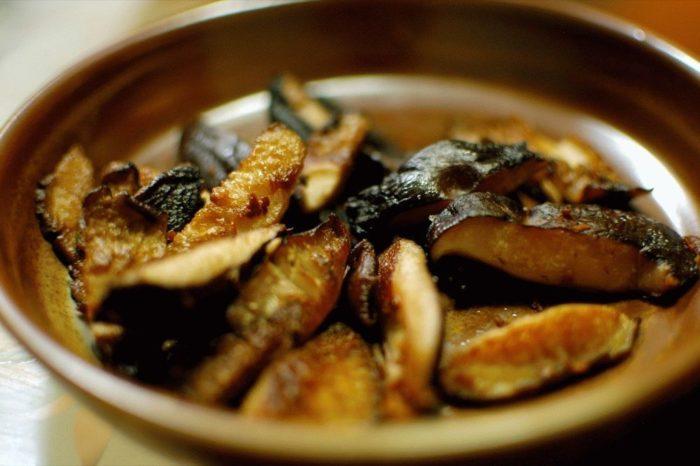
Cut prepared, washed specimens into slices and place in a frying pan with slightly warmed vegetable oil. You need to fry the black man's men over low heat. After they have softened, add the onion, cut into thin half rings, and season with salt. You can cover the pan with a lid. The readiness of the mushrooms is determined by a rich dark color, softness and appetizing aroma. To achieve an even more delicate consistency of the dish, add sour cream a couple of minutes before the end of cooking.
Salting
Soak the peeled mushrooms for three to four hours in a medium strength salt solution. After the allotted time, pull out and cut into pieces no more than 6 cm. Roughly, in order to salt 1 kg of product, you will need 40-50 kg of salt, a couple of large umbrellas of dill, 2 onions, 4 cloves of garlic and a small piece of horseradish root.
Boil the prepared mushrooms until cooked in salted water, rinse in a colander. Transfer to a dish under oppression, after sprinkling with salt and adding all the indicated ingredients. Leave the workpiece in a cold place for a week. Blacksmiths prepared in this way can be used in soups and main dishes, as well as pickled.
Drying
Peel and prepare the mushrooms. Cut them into thin slices of 0.5 cm and spread on a baking sheet covered with parchment. In this case, the slices should not touch. Place the baking sheet in an oven preheated to 45 degrees. You need to constantly monitor the process, tracking the moment when the mushrooms will easily separate from the parchment.After that, raise the temperature to 70 degrees. The oven door should be slightly open. The process is carried out in several stages over two days. Properly dried mushrooms should bend easily without breaking.
Canning for the winter
In order to make a workpiece from a hedgehog, you need 2 kg of mushrooms soaked in a saline solution, they need to be cut into small pieces, put in an enamel pan and filled with water. Bring to a boil and cook for 15–20 minutes. Remove from water. Cool down. Prepare a brine for 1 liter of water - 70 g of salt, 120 g of sugar, 8 sticks of cloves, 10 peas of allspice. The brine should boil, then place the product in it and simmer for 10 minutes over low heat. Pour in 8 tbsp. l. lemon juice and continue to cook for another 5-7 minutes. Remove from heat and place in sterile dry jars. Roll up, turn the lids down and insulate. Leave to cool. Then store in a cool place. A month later, the workpiece will be ready.
Description of species and their photos
All hedgehogs have similar species features, and any of them must be heat treated during cooking.
Edible
Let's consider the types in more detail:
- Yellow (lat.Hydnum repandum) is an edible representative of the genus Hydnum of the Ezovik family. It has a yellowish cap with a smooth surface and edges curved downward, which, due to its irregular shape, often grows together with the caps of neighbors. The pulp is whitish, dense and has a pleasant smell. Grows from July to October in deciduous, coniferous and mixed forests.
- White (Hydnum albidum) is practically indistinguishable from yellow. Its cap is slightly lighter and larger in diameter (up to 17 cm), sometimes with blurred grayish or yellowish spots. It prefers to live in damp places, moss cover, deciduous and coniferous trees. But the main condition for its growth is calcareous soil.
- Antennae (Hericium cirrhatum) grows in small tiers on tree trunks and stumps and is listed in the Red Book. Mostly found in mixed forests. Fruiting from late summer to mid-autumn. The hemispherical fruit body consists of several layers, white-cream in color. It can reach a height of 15 cm. It is a bit like climacodon.
- The comb (Hericium erinaceus) is protected in many countries. Its fruiting body is irregular in shape and has no legs. Consists of long hanging threads, forming a ball, "beard". For this reason, the people come across the name "grandfather's beard". The pulp is white, soft and fleshy. Distributed in the Khabarovsk Territory, the Amur Region, in the north of China, in the Primorsky Territory, Crimea and the foothills of the Caucasus. Prefers to grow on live or dead oak trunks.
- Alpine (Hericium flagellum) in appearance is easily confused with coral. The fruiting body is formed by many branches growing from one common short stalk and reaches 30 cm in height. Young specimens are light, whitish in color. Grows in mountainous areas and foothills, especially firs. The peak of the harvest season falls in late summer - early autumn.
- Coral (Hericium coralloides) - the brightest and most beautiful among its relatives, is a Red Book specimen. Its fruiting body has a bushy, branched structure with dense and brittle thorns on the surface. The color is white or cream. The firm and fibrous pulp has a pleasant mushroom aroma. It grows on stumps or in the deciduous canopy of species such as birch, aspen and oak.
Conditionally edible
A few more species of hedgehogs are suitable for eating, but due to bitterness, they require prolonged heat treatment, therefore, they are classified as conditionally edible:
- Red-headed (Hydnum repandum) grows mainly in the wild. Its cap is wavy in shape, has a characteristic reddish-red color and is rather brittle at the edges. The cylindrical leg is weakly attached to the soil, so the mushroom can be easily separated from the ground.Prefers to live in mixed forests, in moss or low grass.
- Variegated sarcodon (Sarcodon Imbricatus) is a rather rare species, found mainly in coniferous forests and in dry sandy soils. Its cap is covered with brown tile-like scales, lagging behind the surface, and the flesh is dense, off-white in color and has a pleasant smell. The smooth stem of a cylindrical shape, 2.5 cm thick and about 8 cm long. The smell of the motley hedgehog is rather sharp and spicy, so I often use it as a seasoning for dishes.
- The gelatinous pseudo-beetle (Pseudohydnum gelatinosum) is a rather rare specimen, but it can be found in the remains of coniferous and deciduous trees in America, Australia and Northern Europe. The pulp of the mushroom is jelly-like and soft. Although it is considered edible, it is not of any value from a culinary point of view due to its neutral taste.
Inedible
All other representatives of the barnacle mushroom group are inedible, as they are too bitter and may have an unpleasant, pungent odor. These include:
- rough (unkempt);
- felt;
- black;
- white-legged;
- striped;
- Finnish;
- the climacodon is beautiful;
- climacodon northern.
The edibility of variegated hedgehogs
Only young kolchaks are used for food. They are pickled, dried, salted and subjected to other processing methods, but boiled beforehand. Cooking makes it possible to get rid of bitterness. If the mushroom is not boiled enough, it tastes quite bitter. It is because of the bitterness that these mushrooms are classified as conditionally edible.
Variegated Hericiums are very fragrant mushrooms, so they are often used as a seasoning. But such a seasoning is added in small quantities, since it has a specific taste.
Before cooking, you should get rid of the needles located at the bottom of the cap. If the thorns are left in place, then during heat treatment they will fall off, and as a result, the dish will turn into gruel. Hercules variegated are good dried. In terms of taste, they belong to the 4th category.

It is impossible to get poisoned with variegated herd's flies, and another advantage is that they do not have poisonous counterparts.
Similar species
- The rough herringbone differs from the variegated herringbone in a lighter cap and pressed small scales. These are conditionally edible mushrooms, which are often classified as inedible because they have a very bitter taste;
- The pineal mushroom is a rare fungus. It has variegated scales on its cap. It differs from the motley hedgehog in its tubular hymenophore;
- The motley hercock is also outwardly similar to the strongly faded yellow hercoons. They are edible mushrooms with good flavor characteristics.

Collection and preparation rules
Hericiums belong to the 4th category of nutritional and nutritional value, so they are not very popular. But in France and several other European countries, they are considered a delicacy.
Season
It is possible to collect black-haired women from the beginning of July until the autumn frosts on the soil, but the peak of the season usually falls on the beginning of September. The collection should be carried out exclusively in ecologically clean areas, away from the roadway. The leg must be cut off, and not pulled out along with the mycelium.
Useful properties and restrictions to use
Hericiums have been used since ancient times to treat various diseases. They are especially widely used in Chinese medicine. They are very effective in cosmetology, treatment of skin diseases, treatment and prevention of diseases of the cardiovascular system, gastrointestinal tract, as well as bacterial and oncological diseases. Valuable due to the presence in the composition of many vitamins, minerals, micro- and macroelements.
Interesting! The bactericidal effect of the substances of the variegated fungus extends even to Staphylococcus aureus and Salmonella.
However, like other mushrooms, barnacles are considered food that is difficult for the digestive tract, especially for the pancreas.Therefore, people suffering from pancreatitis, cholecystitis and gastritis, children under 5 years old, women during pregnancy and lactation should refrain from using them. It is also not advisable to eat them for people in the postoperative period.
Recipes and cooking features
Hericiums can be fried, salted, marinated, frozen, dried and grinded. To maximize the full taste and aroma, it is advisable to boil them and drain the broth before cooking. After this procedure, they can be used as an addition to meals or as a main product. The thorns on the bottom of the cap can make the dish mushy, so they must be removed completely.
A very unusual and exotic dish on your table may turn out to be an Italian yellow hedgehog salad. To prepare it you will need:
- mushrooms boiled in salted water for 10-15 minutes - 200 g;
- boiled chicken breast, finely chopped - 1 pc .;
- tomatoes, cut into halves - 10 pcs.
 Salad with hedgehogs
Salad with hedgehogs
for refueling:
- anchovy paste - 1 tbsp spoon;
- mayonnaise - 1.5 tbsp. spoons;
- lemon juice - 2 tbsp. spoons;
- grated parmesan - 2 tbsp spoons;
- 2 cloves of finely chopped garlic or garlic squeezed out;
- salt and pepper to taste.
First you need to put mushrooms, breast and tomatoes in a glass jar, and put the dressing on top, press the lid tightly and refrigerate for 4-5 hours, after which you can serve.
What should you pay attention to?
Diseases of laying hens at home can be cured if symptoms are identified in time. First of all, the following general signs appear:
- the bird becomes lethargic;
- spends most of the time on the roost;
- does not want to move and sits with his eyes closed;
- the apathetic state is replaced by excitement and anxiety;
- shortness of breath, the bird may make sounds atypical for it.
If you find the following symptoms, you should immediately start treatment:
- the appearance of mucous secretions;
- the presence of inflammatory processes near the visual organs or the respiratory system;
- the condition of the feather cover worsens, feathers may fall out, look sloppy and dirty;
- upset of the digestive system - diarrhea begins in birds.
How to cook blackberries
Many people wonder if blackberry mushrooms are edible. In our country, they are not popular enough mushrooms, although some of the varieties of this forest gift are quite tasty. For example, yellow hedgehog or motley hedgehog (if collected and cooked at a young age).
Before you send the mushrooms to the pan or start stewing, they must be boiled. Only pre-boiled blackberries will be soft enough in consistency and more delicious.
Little-known, but tasty and nutritious hedgehog grows in different parts of our country. He has more than a dozen species, many of which are listed in the Red Book. In this article, you can familiarize yourself with the description of each mushroom, read where it grows, see what it looks like, get acquainted with the characteristics and find out whether it is edible or not.
This genus of mushrooms stands out from the rest in that it has hymenoforms in the form of conical thorns. Because of this distinctive feature, they were assigned to the same genus Gidnum, but later they were divided into different families.
Description of the motley hedgehog
The fruit body of the variegated fleshy black man's mane is large. The diameter of the cap reaches 5-20 centimeters. The cap is convex, depressed in the center, sometimes it is funnel-shaped. The edges of the cap are wavy. The hat is dry and hard. The surface of the cap is covered with convex scales that look like tiles arranged in circles.
The caps of young specimens are velvety and raised; with age, they become slightly bent. The color of the cap is brown or gray. The scales are darker and coarser.
In young mushrooms, the pulp is dense, light, fleshy, but with age it hardens, dries up and becomes gray in color. The pulp of variegated black man's mane has a not very pleasant smell, its taste is bitter.
The hymenofors is covered with brittle needle-like spines; it is easily separated from the leg. In young mushrooms, the needles are whitish, and in mature specimens they turn brown.

The leg is strong, dry, cylindrical in shape, the lower part of it expands, sometimes it can be tuberous. In young specimens, the legs are dense, while in old mushrooms they become empty. The length of the leg ranges from 2 to 8 centimeters, with a thickness of 1-3 centimeters. The surface of the stem is slightly fibrous. In the upper part, the leg is gray, the same as the cap, and at the bottom it is brown. Sometimes there are specimens with purple legs. Spores are spherical or elliptical, tuberous.
Places of growth of variegated hedgehogs
Chickens form a symbiosis with coniferous and pine tree species. They grow on the soil in groups or singly. Hericiums variegated grow in many forest zones. These mushrooms bear fruit from August to November.

Is the mushroom edible or not
The mushroom is classified as edible. It has a delicate and pleasant taste.
How to cook an alpine hedgehog
The fruiting body does not need to be pre-processed. It is consumed raw. They add to salads, prepare delicious side dishes, soups and various sauces on its basis. Dried fruits are a good seasoning.
Alpine hedgehog can be cooked together with other forest mushrooms. The result is a delicious fried mixture. They add it to all kinds of homemade baked goods:
- pies;
- pizza;
- pies;
- pasties.
The harvested crop can be stored in the refrigerator, but no more than three days. After that, the product will have hardness and bitterness. Before being placed in the refrigerator compartment, it is necessary to thoroughly rinse and fill with salted water for a quarter of an hour, then dry with a towel. Transfer to a tightly resealable bag.
You can dry the crop, but in this case the alpine hedgehog will become tough. It can be used after pre-soaking, adding to broth, gravy or soup.
In China, a medicinal broth, ointment, compress and tincture are prepared on its basis.
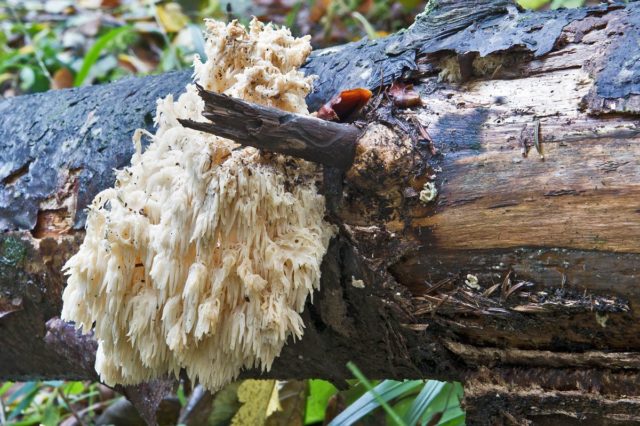
Adult alpine hedgehog
Types of blackberry mushrooms
Blackberries originally belonged to the Gidnum genus. Subsequently, scientists, having identified differences between the species, divided the genus into families. Most of them are quite rare, and some of them are included in the Red Book.

Blackberry variegated (tiled)
Conditionally edible mushroom of the sarcodone genus, which is popularly called Kolchak or hawk. The variegated mushroom was nicknamed because of its variegated color and large convex scales on the cap, similar to tiles.
The brown cap grows to a considerable size, reaching a diameter of 20 cm. In the central part it has a depression in the form of a funnel. In young individuals, the edge of the cap is wrapped. At the bottom there are brittle spines, descending to a massive leg, which is painted in lighter colors than the cap. The inside is whitish and dense. Prefers to settle in coniferous forests.

Blackberry yellow
The fleshy cap with a diameter of 6 to 12 cm has a flat shape and a concave center. Depending on the region of growth, the color changes from white to orange. Smooth to the touch with a hard-to-peel film. On the lower part, yellow fragile thorns grow, descending to the stem.
Often there are specimens with a leg attached off the center. The pulp is dense and whitish in color. The height of the cylindrical leg is up to 6 cm. In the lower part it is slightly widened. In the process of growth, parts of the fruiting body can grow together.

Coral blackberry
This unusual-shaped mushroom turns the forest into a mysterious and magical one. But since he listed in the Red Book, the likelihood of meeting him is very small. Usually the fungus settles singly on stumps and trunks of fallen deciduous trees.
The shape of the branched fruit resembles an underwater coral, reaching 20 centimeters in size. Smooth or curved spines, growing up to 2 cm, are white or cream colored.
The structure of the fruiting body is elastic-fibrous, white with a pleasant smell and taste. In mature individuals it becomes harsh.

Blackberry comb
The appearance of the fruiting body resembles noodles, which gave it synonymous names: bearded mushroom, mushroom noodles and lion's mane. Occurs on living and dead hardwood. The shape of the mushroom is round or irregular, reaching 20 cm. The weight of one body can be 1.5 kg.
When finished, it resembles seafood. The color ranges between cream and light beige. The fleshy pulp, when dried, turns from white to yellowish. In addition to good taste, it has medicinal properties.
Hericum motley, or sarcodon
This mushroom is not related to the yellow hedgehog. As the saying goes, "not only not a relative, but not even a namesake."
The motley hedgehog belongs to the genus Sarkodon of the Bunkerov family. The Latin name for the mushroom is Sarcodon imbricatus. The name "motley sarcodon" quite often sounds nowadays even in Russian.
Also called the scaly hedgehog, the tiled hedgehog. In some places they are called "chicken" or "hawk". I don't even try to explain the last two names - nothing comes to mind.
Herz's Man is called for the underside of the cap covered with light gray thorns. Such is the hymenophore (spore-bearing layer) of the variegated hedgehog. And only this mushroom is similar to yellow hedgehog... Spikes replace the tubes or plates that are more familiar to us.

Instead of plates or tubes, the variegated hedgehog has thorns
The cap can reach a diameter of 25 cm. At first it is dome-shaped, then it becomes convex-flat, and later it can become concave.
The surface of the cap is covered with large brown scales. They are arranged concentrically, quite tightly adjoining one to one, forming a kind of shingles. One edge of each scale is raised. But the mushroom still does not look "shaggy".
The surface of the scales is colored in darker tones. Sometimes they are almost black. But, rising above the surface of the cap, the scales reveal a lighter, brown or light brown skin. The mushroom looks variegated, which explains its specific name.
The stem is dense, somewhat thickened at the base. The color of the leg is gray-brown, sometimes even with a purple tint. The leg of young mushrooms is solid, and of old ones it is hollow inside.

It looks like a motley one from below
The flesh of the mushroom is white, with age it becomes light gray. The older the fruiting body of variegated hedgehog, the harder it is. In addition, with age, the mushroom becomes bitter.
The motley hedgehog grows throughout the forest belt of Russia and European countries (in temperate latitudes). Somewhere the mushroom is more common, somewhere less common. But its area is huge.
Mycorrhiza forms with conifers. Prefers sandy soils. In such conditions, mainly Scots pine grows in our country, and the motley hedgehog is one of the constant companions of this tree. Most often it can be found in pine forests.
Fruiting bodies are formed from the middle of summer, and the limit to this is usually set by autumn frosts. There are no "doubles" in the motley hedgehog, and there is no need to be afraid to confuse it with some kind of poisonous or inedible mushroom. But at a "mature age" the mushroom itself becomes poorly edible due to its hardness and bitterness.
How is variegated hair man used?
Usually only young fruiting bodies are collected, which have not yet fully developed. They have white flesh and a solid leg. Mushrooms, like the one in my photo, are no longer worth taking. In addition, the fruit body is damaged by insect larvae.
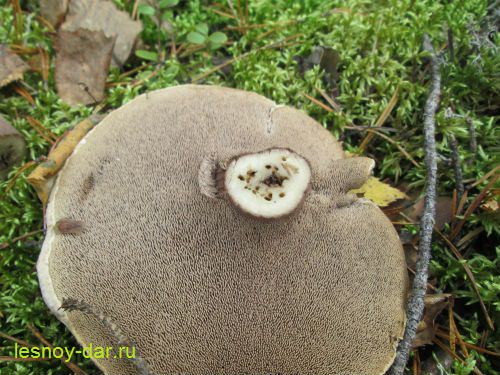
In this form, the mushroom is no longer taken
Sheep's mane is fried, sometimes salted hot (after ten minutes of boiling) and pickled. You can also dry it and then grind it into a powder used as a fragrant seasoning.
The mushroom has medicinal properties. But, like many other mushrooms, variegated black man's mane has never been used in folk medicine.
The substances of the black barnacle, extracted by scientists using various methods, have an antimicrobial effect on many types of bacteria, including Staphylococcus aureus and Salmonella.
Laboratory studies also show that preparations from this mushroom can be useful for cancer, stomach cancer, and leukemia.
However, I will clarify once again - these are the results of studies carried out, so to speak, "in vitro" ("in vitro"). Practical experience, real statistics of cures are not yet available.
But to collect the variegated hedgehog for culinary purposes, to use it for food - and why not?

